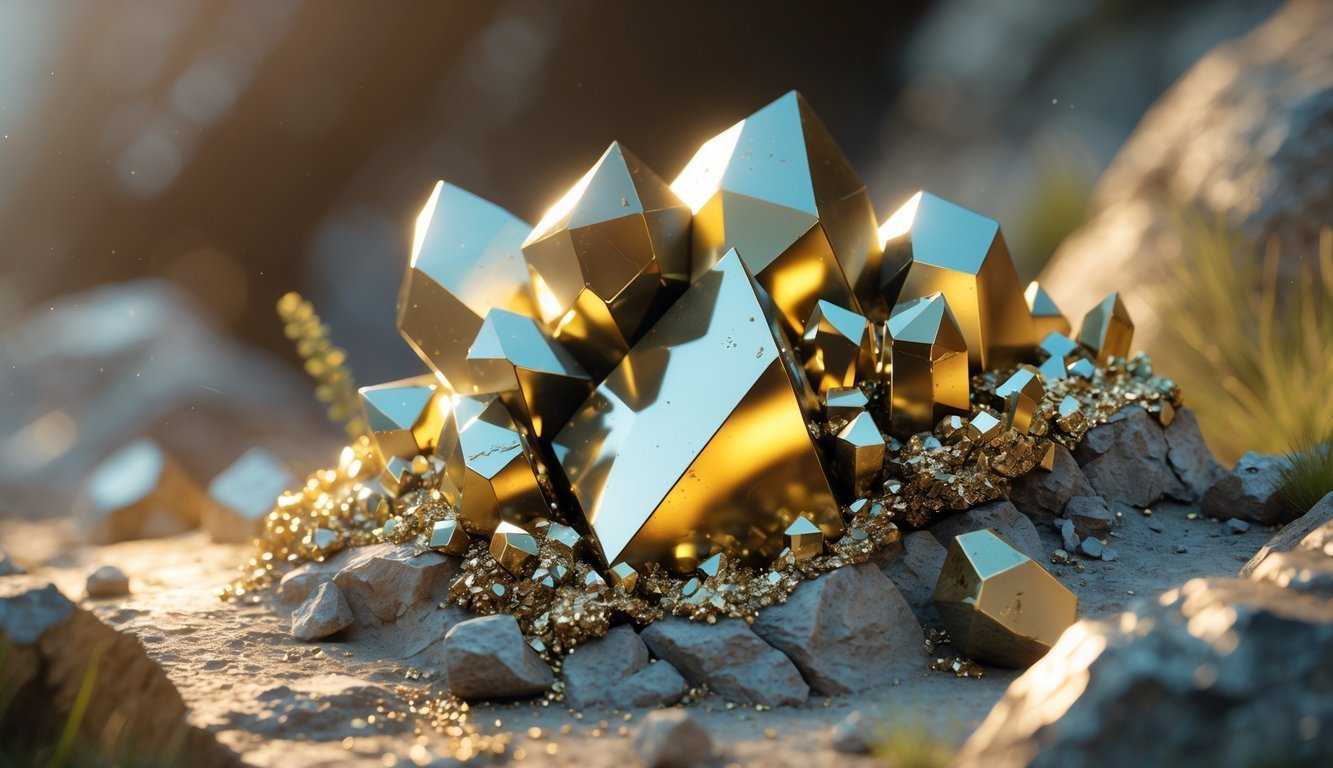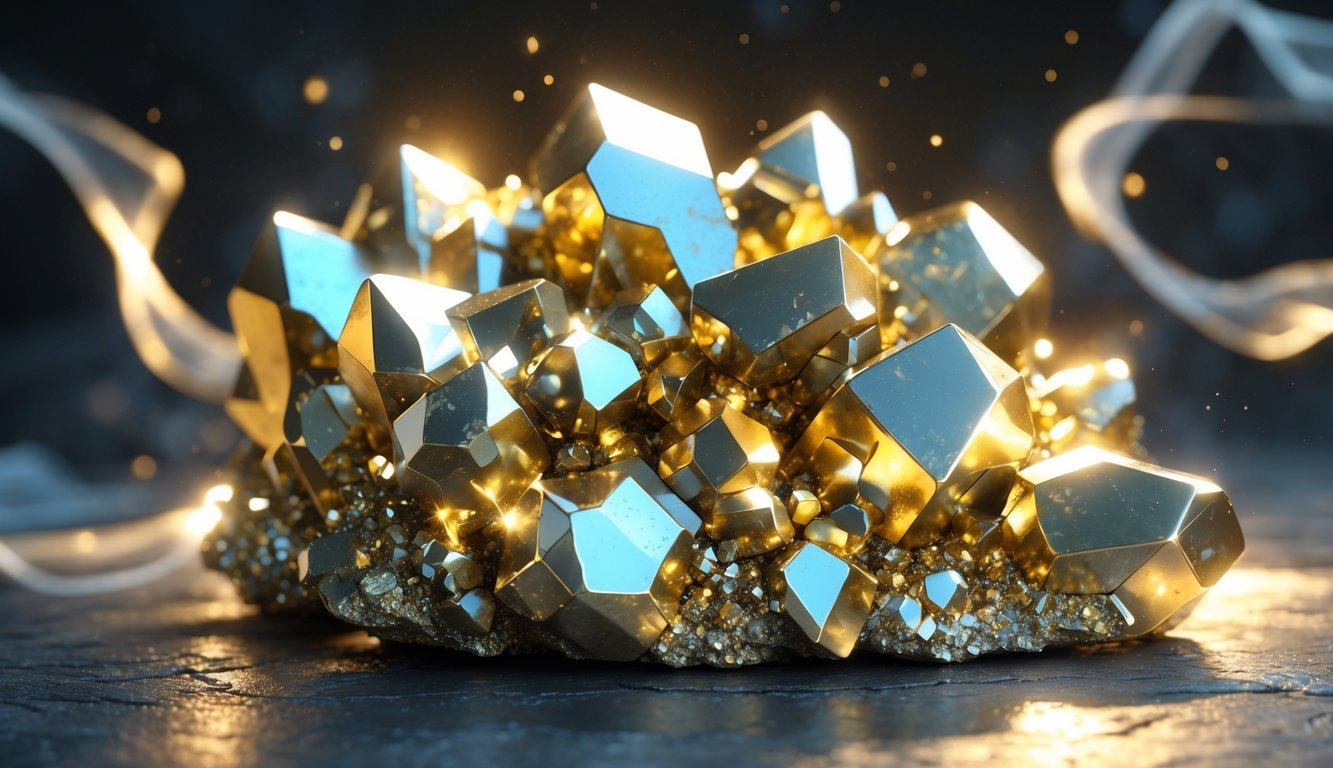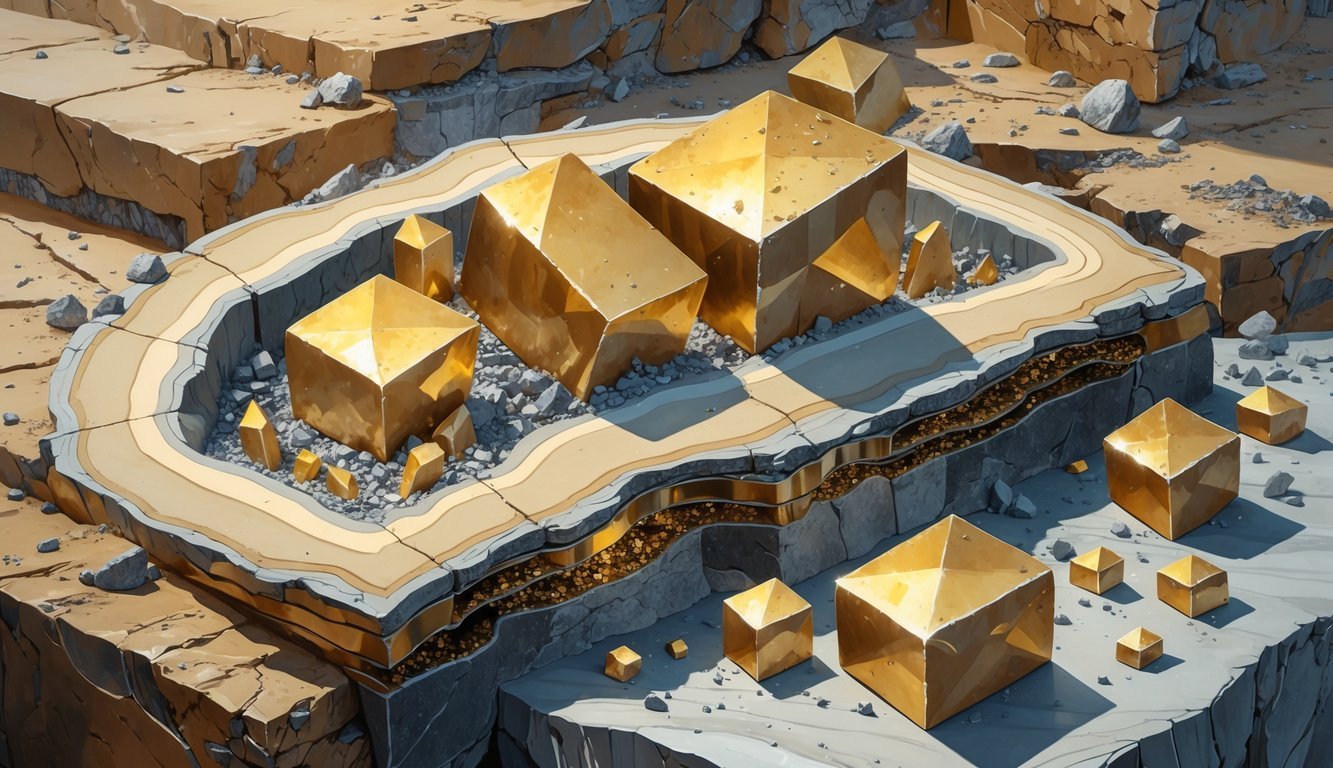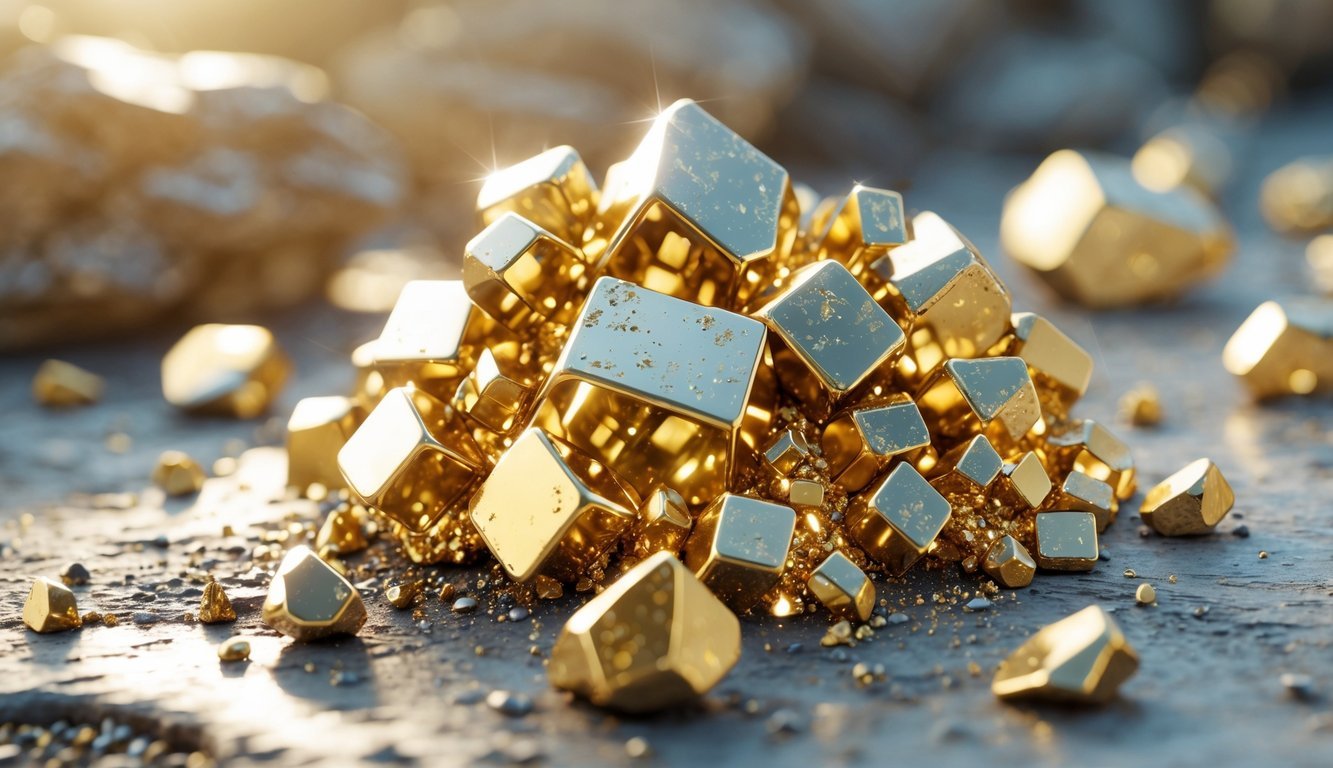PsychNewsDaily Publishers
100 Summit Drive
Burlington, MA, 01803
Telephone: (320) 349-2484
PsychNewsDaily Publishers
100 Summit Drive
Burlington, MA, 01803
Telephone: (320) 349-2484
Pyrite, known as "Fool's Gold," resembles gold but has unique properties, forming in various geological environments and symbolizing protection, energy, and abundance in spiritual practices.

People call pyrite “Fool’s Gold” for a reason—it really does look a lot like the real thing. But there’s more to pyrite than just a shiny, metallic surface. Pyrite stands for protection, energy, and abundance, making it an interesting stone for anyone curious about its physical and spiritual sides.
You might not realize pyrite isn’t just a pretty mineral. It forms in fascinating ways deep underground, and people have used it for centuries in tools and decoration.
If you’re drawn to pyrite for its healing energy or just want to know why people confuse it with gold, you’re in the right place. Let’s dig into the secrets behind this intriguing mineral.

Pyrite, a shiny mineral made of iron sulfide, often fools people because it looks so much like gold. People have felt drawn to it for ages, for reasons both practical and spiritual.
You’ll find out why it’s called “Fool’s Gold,” how it fits into history and culture, and why it stands for more than just wealth.
People started calling pyrite “Fool’s Gold” because it looks like gold but doesn’t have the same value. If you haven’t studied minerals, you might easily mistake it for the real thing.
During the gold rush, hopeful miners often got tricked by pyrite. Its metallic shine makes it sparkle like gold, but its hardness and other traits set it apart.
The nickname serves as a warning: don’t confuse pyrite with actual gold. Even though pyrite fooled many, it’s still a common and important sulfide mineral in nature.
People found ways to use pyrite beyond just being tricked by it. Ancient civilizations sometimes made jewelry or tools from pyrite because it’s hard and shiny.
Sedimentary geochemists study pyrite to learn about ancient environments. During gold rushes, pyrite led many prospectors astray, but it also taught patience and sharp observation.
Some cultures saw pyrite as a symbol of protection or health, probably because of its bright look and energy. Pyrite’s story winds through both practical uses and human beliefs.
Many folks believe pyrite carries energy of confidence and inner strength. It’s often linked to prosperity—not because it’s gold, but because it encourages a positive, can-do mindset.
People say pyrite resonates with the Solar Plexus chakra, which is all about willpower and growth. If you’re into crystals for healing or motivation, pyrite might help you focus on your potential.
Shailee Bhattacharya, a well-known voice in crystal healing, often points out how pyrite can boost self-worth and motivation. It’s not just a pretty rock; it’s a reminder that real treasure comes from within, not just from material things.

Pyrite catches the eye with its shiny, metallic look and pale brass-yellow color. It forms in many types of rocks and places, showing up in all sorts of shapes.
You might find yourself confusing it with gold at first glance. Pyrite has unique properties and even plays a role in industry and modern science, including research into green energy.
Pyrite usually forms cubic crystals, but sometimes you’ll spot octahedrons or pyritohedrons. Its shapes are often sharp and perfect, making it stand out.
Look for the tiny parallel lines, or striations, on its surface—these help you tell it apart from gold. Pyrite’s metallic luster and brass-yellow hue are hard to miss.
With a hardness of about 6 to 6.5 on the Mohs scale, it’s tougher than gold. When you rub pyrite on a rough surface, it leaves a dark greenish-black streak, not gold’s yellow one. These clues make identification a lot easier.
Pyrite’s chemical formula is FeS₂—so it’s made of iron and sulfur. The iron and sulfur atoms combine to create iron disulfide.
Sometimes, tiny defects in the crystal can change its color a bit or affect its shine. You might even find small traces of other elements like cobalt or lithium inside pyrite.
Lithium has become a hot topic because of batteries. Pyrite’s specific gravity, about 4.9 to 5.2, is heavier than many common minerals, which helps you pick it out.
You’ll often spot pyrite in shale and sedimentary rocks, especially in places like the Appalachian Basin. In mining, it shows up in waste materials—think mine tailings or drill cuttings.
These leftovers can sometimes release sulfuric acid if exposed to air and water, which can cause environmental problems. In industry, people mainly use pyrite to make sulfur dioxide, which is key for sulfuric acid.
It’s not really a source of metal, but it matters for understanding mining waste and how to handle pollution.
Researchers are taking a close look at pyrite for clean energy. Since pyrite reacts well with electrons, it could be useful in solar cells and lithium-ion batteries.
Teams at places like West Virginia University are exploring pyrite as a cheaper, more eco-friendly material for renewable energy devices. Scientists hope pyrite’s natural qualities could replace rare, expensive elements in solar panels.
With its abundance and low toxicity, pyrite is an exciting piece of the green energy puzzle.
You typically find pyrite in sedimentary and metamorphic rocks, especially organic-rich shale. It’s common in Middle-Devonian rocks in regions like the Appalachian Basin.
Pyrite often forms alongside other minerals like chalcopyrite and pyrrhotite. Its formation links back to geological processes involving iron and sulfur-rich fluids moving through rocks.
Chalcopyrite looks similar but has a brighter yellow color and is softer. Pyrrhotite, on the other hand, is magnetic, while pyrite usually isn’t.
You can use a magnet to tell pyrite apart from pyrrhotite. The streak test helps too: pyrite leaves a greenish-black streak, chalcopyrite’s is black, and gold’s is yellow.
Striations only show up on pyrite, so keep an eye out for those lines.
Some pyrite crystals actually hide tiny amounts of real gold inside—people call this invisible gold. New tools like the atom probe let scientists see individual gold atoms trapped in pyrite’s crystal structure.
This discovery gives geologists a better understanding of how gold deposits form. It also helps mining companies extract precious metals more efficiently from pyrite-rich ores.
Keep pyrite dry and away from air as much as you can. It can tarnish or break down when it gets wet, producing sulfuric acid.
Store pyrite in sealed containers or display cases to prevent damage. Handle it gently to avoid scratching or chipping those sharp crystal faces.
When pyrite reacts with air and water, it can produce sulfuric acid. This acid can pollute soil and waterways if mine waste isn’t managed well.
You should take care around old mines where pyrite-rich waste might be present. Some industrial byproducts from pyrite need careful disposal to prevent environmental harm.
If you work near mining sites or collect pyrite, it’s good to be aware of these hazards.

Pyrite carries meanings tied to confidence, wealth, and protection. It might look like gold, but it brings its own unique qualities to the table.
People say pyrite stands for confidence and strength. It’s thought to boost your willpower and help you tackle challenges with courage.
Keep pyrite near you—maybe in your wallet or at your desk—to attract abundance. Folks believe it draws money and success by encouraging a positive, focused mindset.
Pyrite can lift your mood and energy. Many people say it helps them stay motivated and clear-headed during busy or stressful times.
Pyrite is known for shielding against negative energy. It acts like a barrier, blocking harmful thoughts or influences from your surroundings.
Pyrite’s shiny, yellowish color makes it look a lot like gold, especially if you’re not familiar with minerals. That’s exactly why it earned the nickname “Fool’s Gold.”
Pyrite stands out because of its metallic shine and its brass-yellow color.
People often mistake it for gold at first glance, but it’s actually harder and breaks more easily.
It’s made up of iron and sulfur, which gives it a distinct chemical makeup.